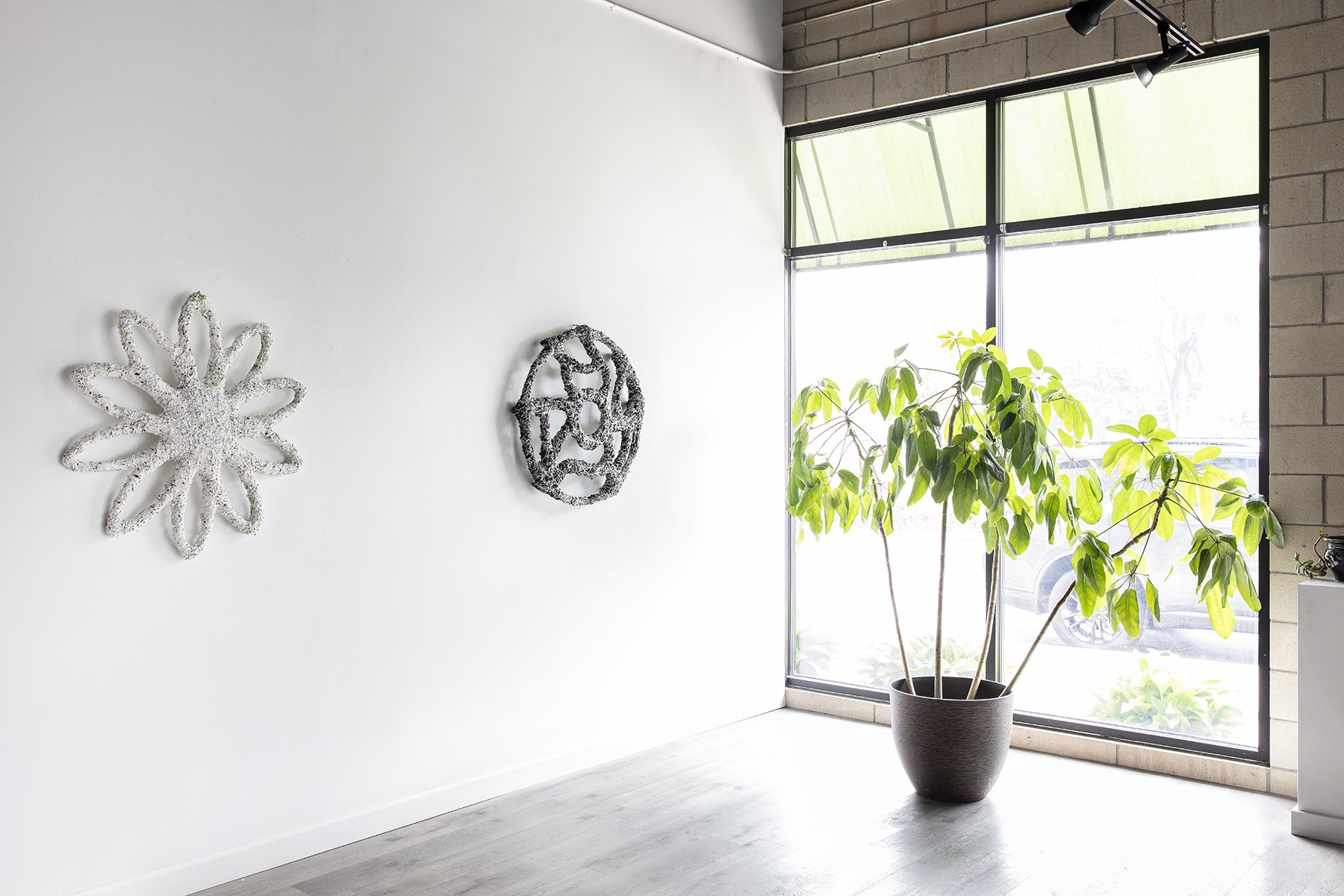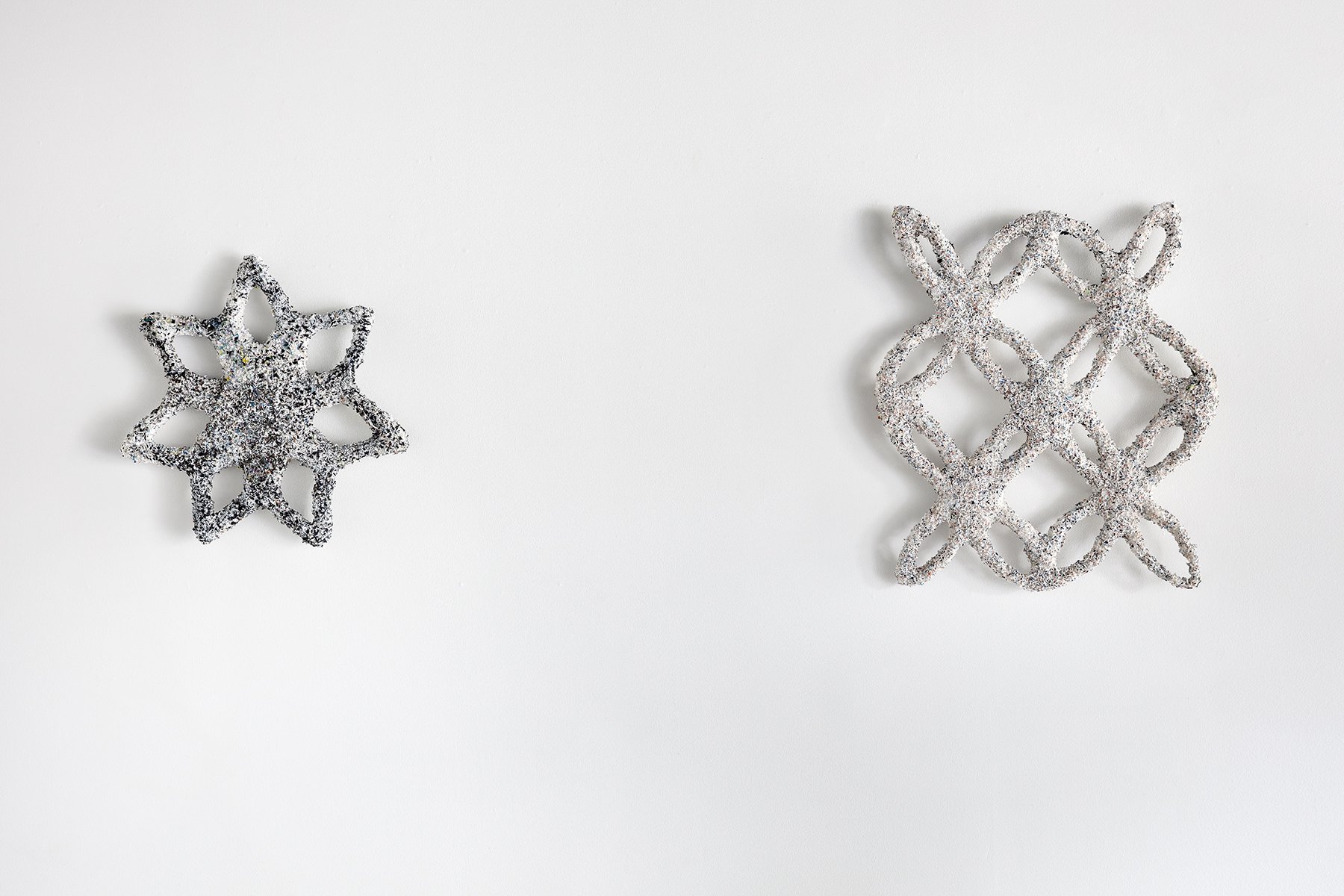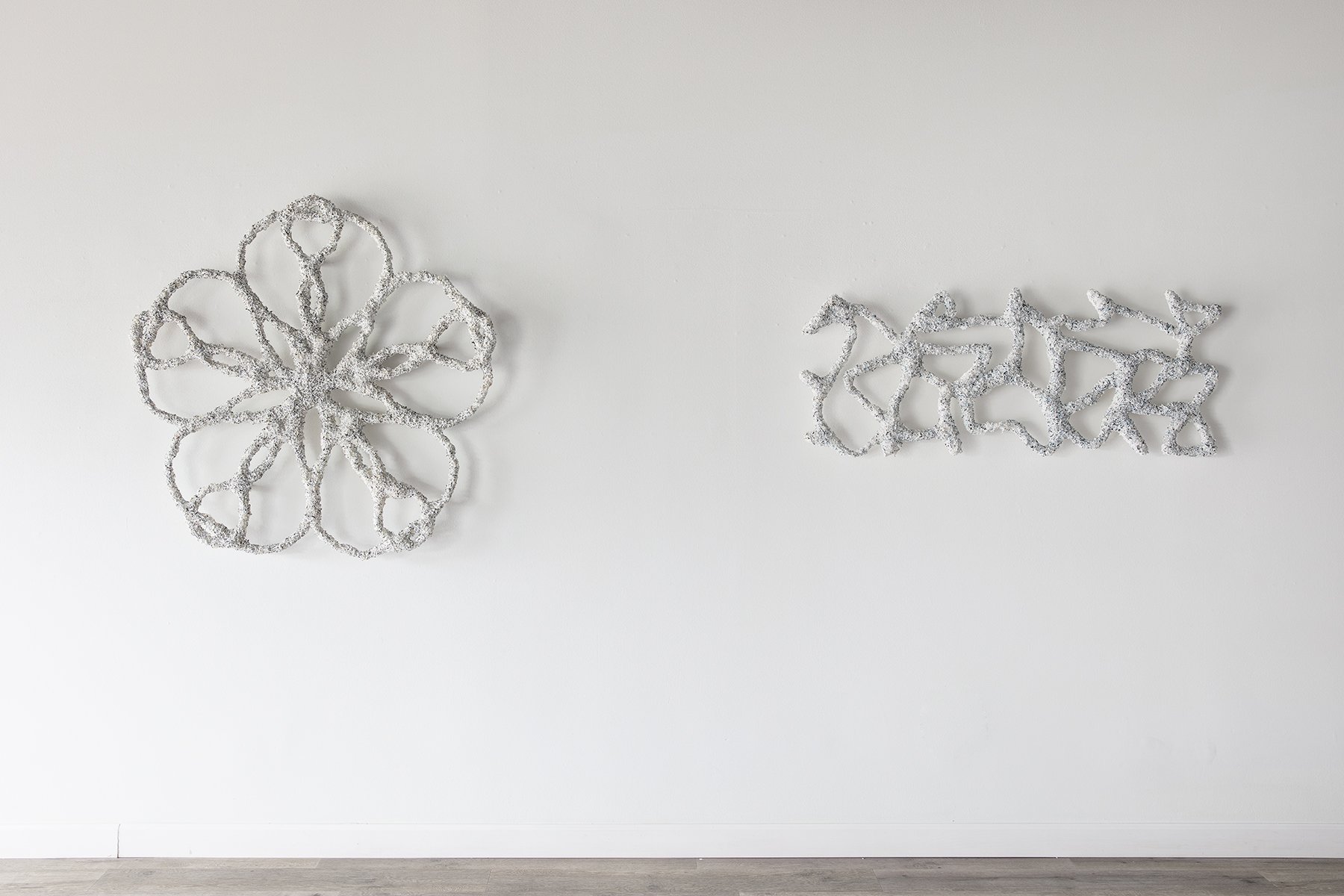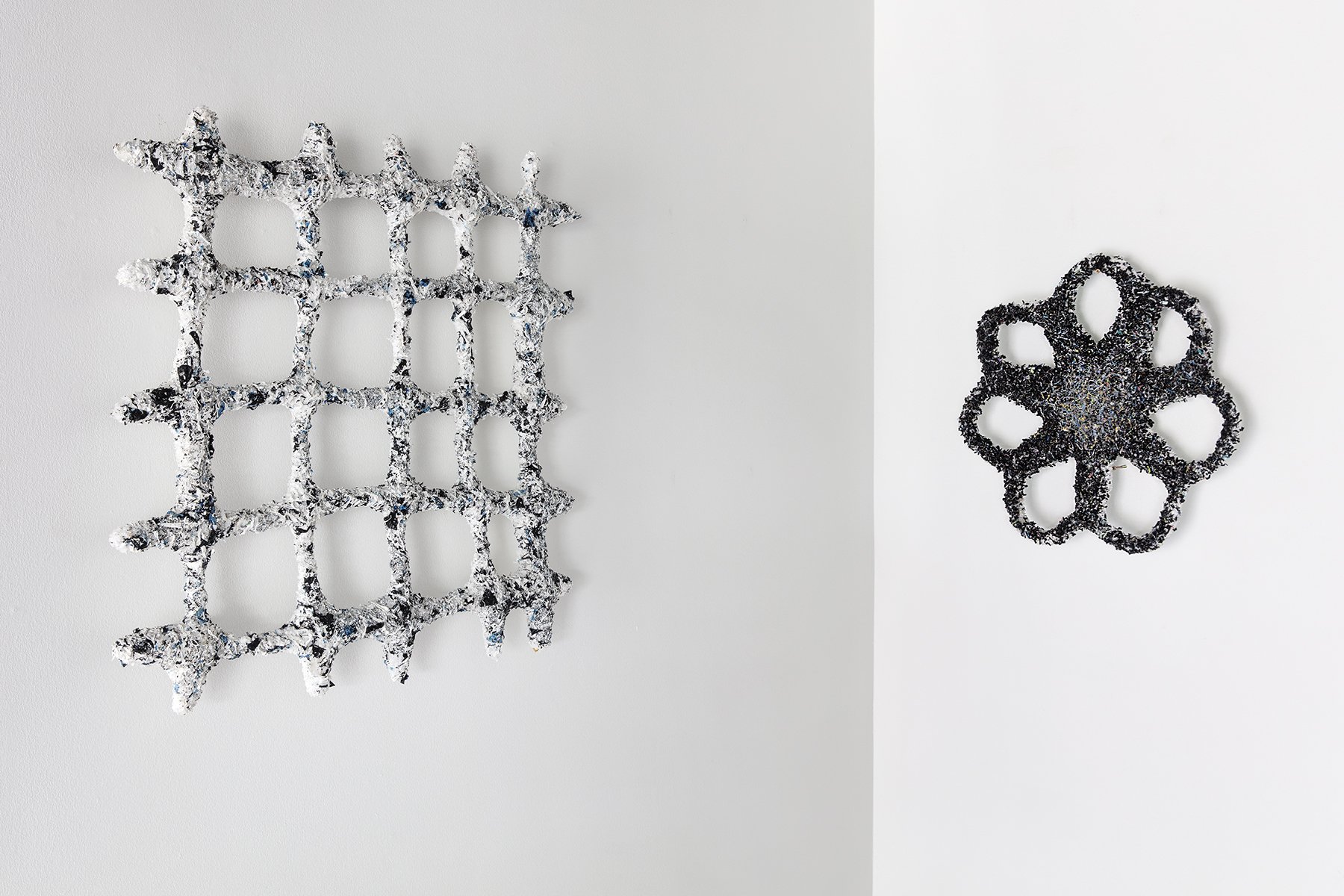
Plastic Future / Plastic Past
SIMON ANTON
June 5, - July 12, 2025
Artist Talk: June 19th 6 - 8 PM
"Plastic Future / Plastic Past" explores the layered, turbulent, and transformational history of Detroit through the lens of plasticity - both as material and metaphor. Rooted in the artist Simon Anton’s background in architecture, material design, and sculpture, this body of work investigates how the city’s architectural ornamentation, industrial legacies, and cultural narratives can be reinterpreted through experimental processes using recycled plastics.
Anton’s process is a fusion of hand-built steel armatures, electrically heated wire, and molten recycled plastics - techniques that transform industrial detritus into organic, coral-like growths. These forms reimagine the grandeur of Detroit’s historical ornamentation, such as the bronze motifs of the Fisher Building, while grounding them in contemporary material realities. The result is a new kind of monument - one that embodies memory, contradiction, and resistance.







SIMON ANTON
Simon Anton (b. 1988, based Detroit, MI; he/him) is a multi-disciplinary artist, designer, and educator that collaborates across the fields of architecture, interior design, furniture, art, and jewelry. He is the co-founder of Thing Thing, a design collective that experiments in the transformation of post-consumer, hand-recycled polyethylene plastic sourced from surrounding communities and from industrial manufacturing. Their program “Transforming Trash,” works with youth in Detroit and the Big Island of Hawaii to transform community plastic waste into art. Anton’s work has been presented at the Venice Architecture Biennale, Hong Kong Shenzhen Biennale, Expo Chicago, Museum of Contemporary Art Detroit and the Venice Architecture Biennale. Anton received a Master of Fine Arts in 3D Design from Cranbrook Academy of Art.
Simon Anton repurposes plastic waste into sculptural works that echo the elegance of architectural ornament while speaking to the urgency of our material present. Grafting discarded plastics onto sculptural frameworks, he reimagines design relics as futuristic artifacts—hybrids of history, utility, and excess. These works feel unearthed from a speculative excavation, where classical forms and contemporary detritus converge. Sourced from personal and industrial waste streams, Anton’s process reflects a circular logic—one that questions permanence, beauty, and what we leave behind. In a world where plastic is inseparable from the built environment, his sculptures offer both critique and promise.





SIMON ANTON
Locally sourced recycled plastic waste, steel, brass, nichrome
34 × 28 × 3 inches